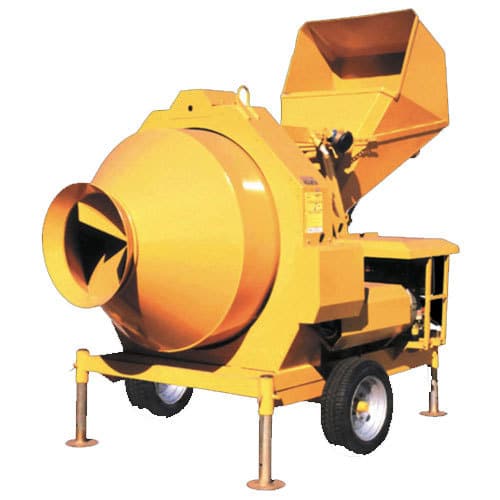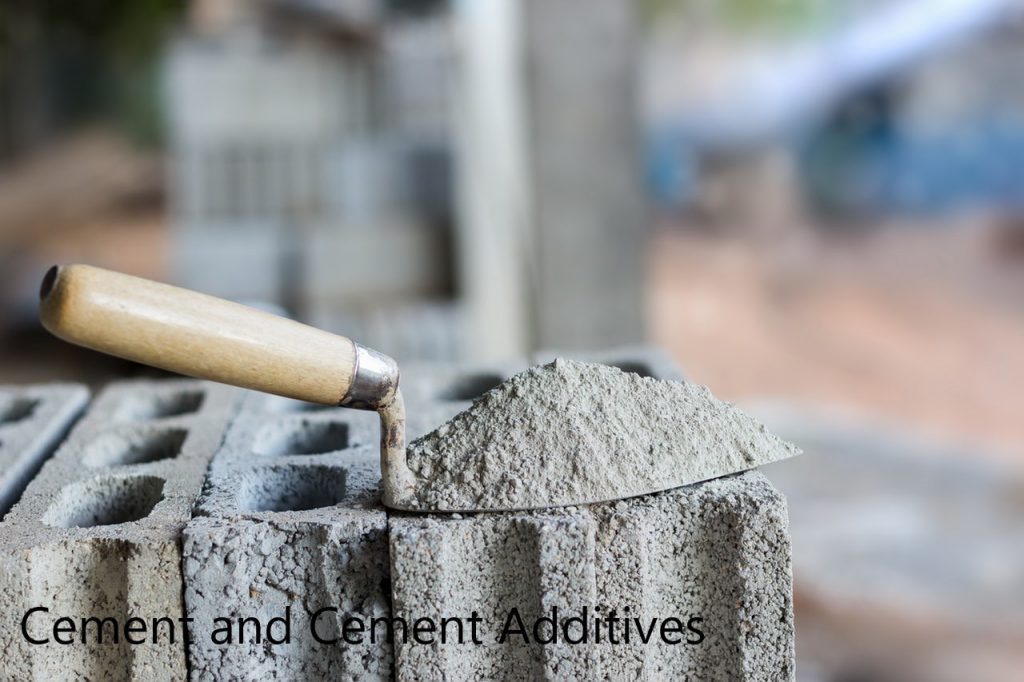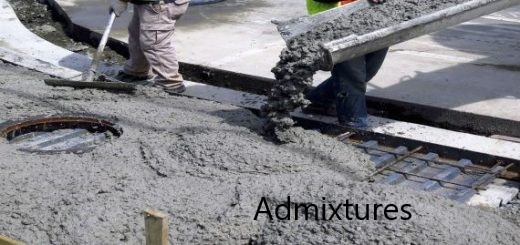The concrete mixer is the machine that is used to produce the concrete. The purpose of the mixer is to mix the ingredients of the concrete as required/specified.
Depending on the nature of the concrete mixer, the method of supplying the materials into the mixing bin will vary. There may be manual methods or automated systems developed to make the process easier.
Concrete Production
Production of concrete is made for ingredients such as water, cement, and coarse and fine aggregates.
Firstly we produce the cement and we used the required types of cement. The next stage is the proportion of the concrete. This process is also called the mix design. Once the mix design is finalized we can proceed with concrete mix production.
Once production is done, we transport the concrete to the site and pour and compacted it as required. Curing of concrete will be done at least for 7 days and the method of curing of concrete will depend on the nature of the structure.
Common Types of Concrete Mixer
The classification of the mixer is based on its nature. Mainly there are two types of concrete mixer.
- Continuous mixer
- Batch mixer
Let’s discuss each type of mixing method in detail.
Continuous Mixer
The continuous mixer is the batching plate we used to produce the concrete. Its process is continuous and we can deliver the concrete without a break. It contains automated systems and in some of the mixers, almost all the operations will be done automatically.
All most all the con

Some of the mixers need a person to do the loading of the material into the mixer bin. We may adjust the weight of each material according to the mix design. Then it is all about pressing the relevant button to load the material into the bin, mixing and unloading into the truck mixture.
A continuous concrete mixer is used for most of the mass production. When there is a large volume of concrete that needs to be produced, we may have a batching plant at the site. Other than that, batching plants are located in different places to provide concrete based on the demand of the industry.
Batch Mixers
Production of concrete on is small scale will be done mostly with batch mixers. This type of concrete mixer is very popular in the construction industry and it is mostly used to produce low-grade structural and no structural concrete.
In general, it is not advisable to use to produce concrete grade above 30 unless there is a method to maintain the mix proportions accuracy and consistency during the process of mixing through the concrete.
There are different types of concrete mixers used for concrete production. The categorization is based on the type of concrete mixer and its operating method.
- Concrete Drum Mixer
- Tilting Drum
- Non Tilting Drum
- Reversing Drum Mixer
- Pan Type Mixer
Let’s discuss each type of concrete mixer in detail with their operation and limitations.
Tilting Drum Mixer
This type of concrete mixture is used in building construction, road construction and any other small-scale construction works. Further, mostly the concrete drum mixer is used to produce the low-grade concretes.
The ability of tilting is the reason for its name as a tilting drum mixer. Firstly, we need to put all the ingredients into the concrete drum. With the mixing water will be added. It should be noted that it is the responsibility to make sure the correct quantities are used in each material in each batch.

If we cannot maintain consistency during the mixing throughout the concrete process, there may be issues in the strength of the concrete.
This mixer work by an electrical motor. Once the mixing is completed the drum is turned downward while it is rotated in the opposite direction. Then the concrete can be collected to pour.
Non Tilting Drum Concrete Mixer
The process of the mixer is the same as the tilting drum concrete mixer.
The main difference between this equipment is it can not be tilted. It only does the rotation to mix the concrete and it cannot be rotated in any other direction.
Discharging will be done by rotating the mixer in the opposite direction or by inserting the chute into the drum.
Reversing Drum Mixer

This type of mixer further the development of the non-tilting drum mixture. In a non-tilting mixer, we take mixed concrete from where we insert the materials.
However, reversing the drum mixer has been further developed to make it easy to get the mixed concrete easily. The collection of the concrete can be done from the opposite direction. It means, we insert ingredients from one direction and take them out from another direction.
Pan Type Mixer
Instead of a drum, a pan is used to mix the concrete. The mixing process and procedure for inserting the ingredients are the same as the drum mixers.
It contains blades in the pan to improve the mixing of the concrete. Pan mixer is suitable for making a large volume of concrete if we can maintain the consistency of the concrete mixing.
This can be used to mix both wet and dry mixtures. The mixing pan is movable and it can be tilted when the mixing is completed to take out the concrete.

In addition, there may be other different types of concrete mixer machines produced customized based on the function of the work and to suit the condition of the site.
The selection of the types of concrete mixer shall be done based on the work to be done and considering the convenience of the work.
Related Articles
- Mas Concrete
- Roller Compacted Concrete
- Self-Compacting Concrete
- Concrete
- All about Concrete
- Concrete Construction
- Reinforced Concrete
- Ready Mix Concrete
- Advantages and Disadvantages of Reinforced Concrete
- How to Select Concrete Grade
- Properties of Concrete
- Admixture Testing
- What is Spalling of Concrete – causes and repair
- 20 Factors Affecting Durability of Concrete
- Durability of Concrete [Requirements and Problems]
- Vibration of Concrete [methods and correct procedure]
- 6 Factors Affecting Curing Time of Concrete
- 11 Methods for Curing Concrete
- A Detailed Study on Concrete[from scratch]
- Types of Shrinkage in Concrete [detailed study]


